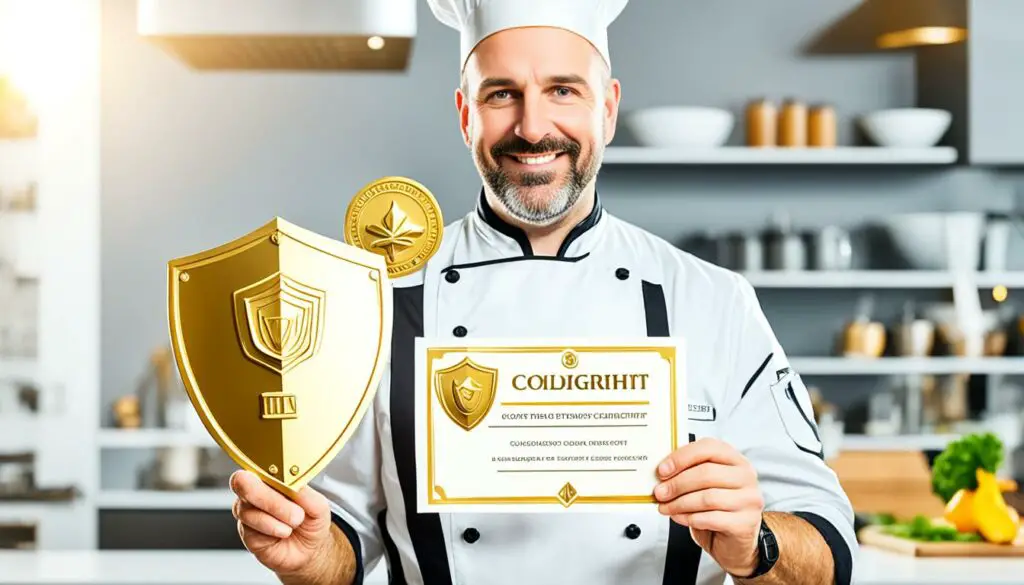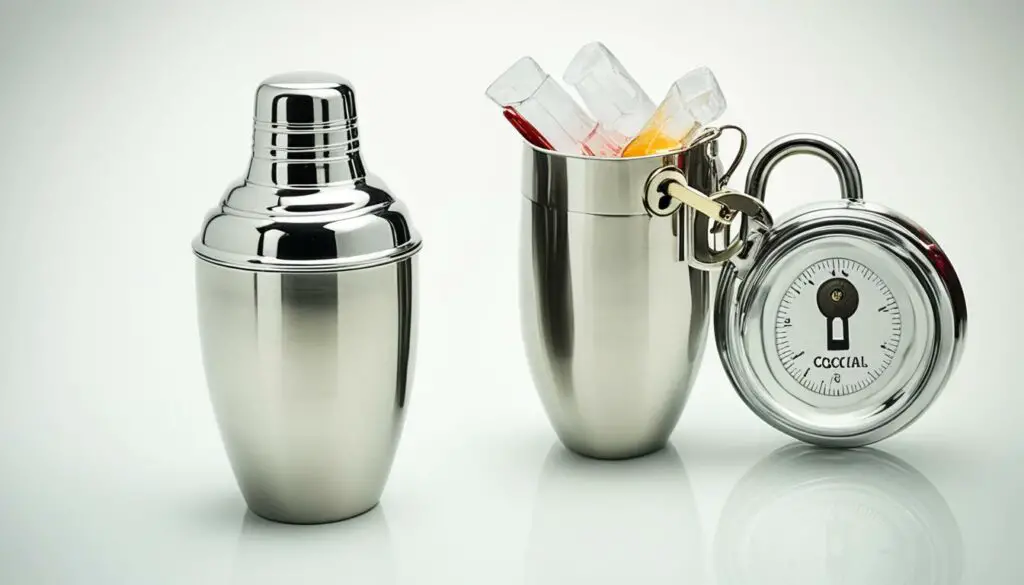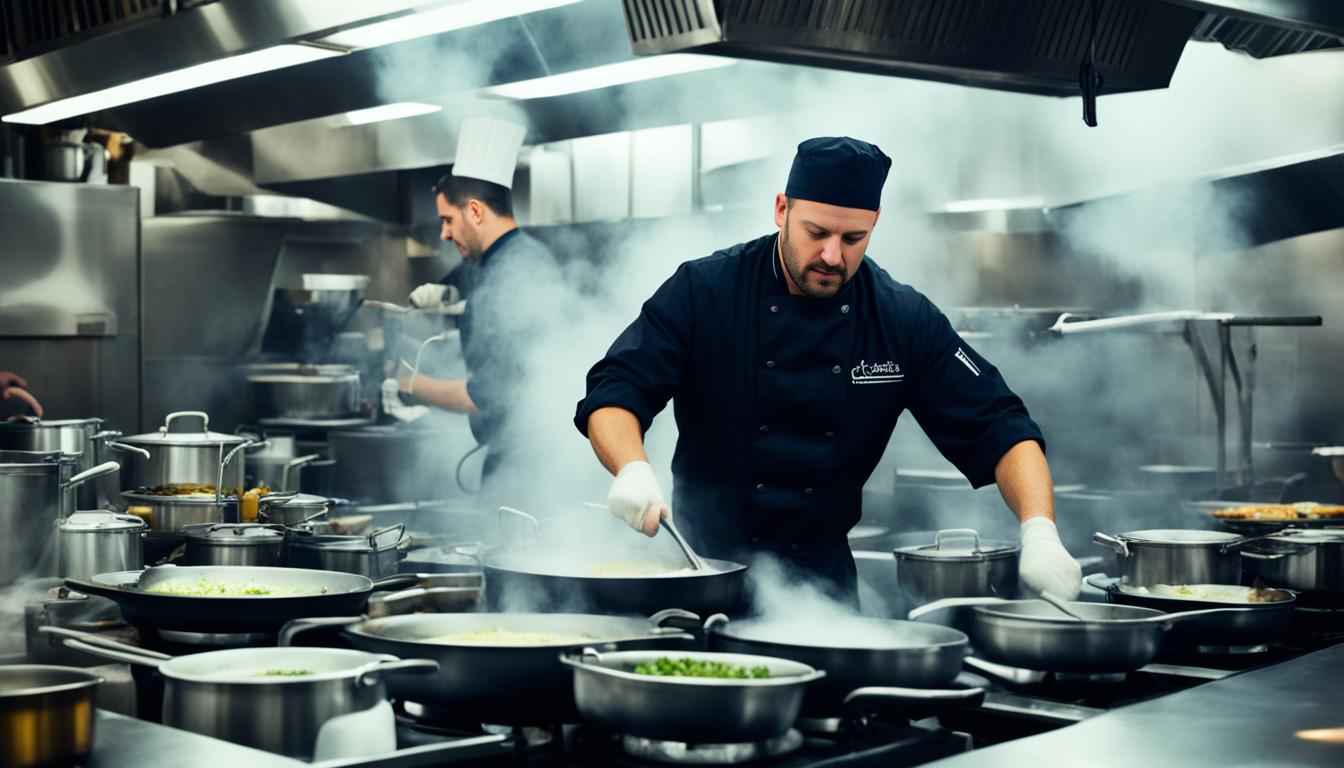Can you use recipes in a restaurant? Are there legal considerations when it comes to utilizing recipes in your restaurant’s dishes? If you’ve ever wondered about the legal aspects of incorporating recipes into your restaurant operations, you’re not alone. Understanding the legal tips for using recipes in restaurants is crucial to ensure compliance and protect your culinary creations.
In this article, we will explore the different forms of intellectual property protection for recipes and provide valuable insights on how to navigate the legal landscape when it comes to using recipes in your restaurant kitchen. From copyright and trademark protection to trade secrets, we’ll cover it all. So, let’s dive in and discover the legal world of restaurant cooking with recipes.
Contents
- 1 Copyright Protection for Recipes
- 2 Patent Protection for Recipes
- 3 Trademark Protection for Recipes
- 4 Trade Secret Protection for Recipes
- 5 Circumstances for Copyright Protection of Recipes
- 6 Making a Recipe a Trade Secret
- 7 Intellectual Property Protection for Cocktail Recipes
- 8 Can a Restaurant Trademark a Recipe?
- 9 Can Recipes Obtain Patent Protection?
- 10 Conclusion
- 11 FAQ
- 11.1 Can recipes be protected by copyright?
- 11.2 Can recipes be protected by patents?
- 11.3 Can recipes be protected by trademarks?
- 11.4 How can recipes be protected as trade secrets?
- 11.5 When are recipes eligible for copyright protection?
- 11.6 How can a recipe be made a trade secret?
- 11.7 How can cocktail recipes be protected by intellectual property?
- 11.8 Can a restaurant trademark a recipe?
- 11.9 Can recipes obtain patent protection?
- 11.10 What are the legal considerations for using recipes in restaurants?
- 12 Source Links
Key Takeaways:
- Understanding the legal considerations when using recipes in restaurants is important for compliance.
- Recipes may not always be protected by traditional forms of intellectual property like copyright and patents.
- Trade secret protection can be a valuable tool to safeguard your restaurant’s recipes.
- Trademark protection can help protect the names and branding associated with your recipes.
- It’s crucial to implement measures to keep recipes confidential and consider legal protection options.
Copyright Protection for Recipes
When it comes to protecting recipes, copyright law can be a complex and challenging area. Copyright protection grants exclusive rights to authors, creators, and artists for their literary and artistic works, but individual recipes often fall into a gray area.
Unlike novels, poems, or paintings, recipes are primarily functional instructions that outline the steps to create a dish. They typically lack the necessary literary expression to qualify for copyright protection. Simply listing ingredients and cooking instructions may not meet the threshold.
However, it’s important to note that copyright protection can still apply to a collection of recipes, such as a cookbook. In this case, the arrangement, selection, and creative commentary accompanying the recipes can strengthen copyright protection. Adding original commentary and incorporating creativity can elevate a collection of recipes beyond mere functional instructions.
While copyright law may not protect individual recipes in their purest form, there are still ways to safeguard culinary creations. Additionally, understanding the limits of copyright protection can help restaurants and chefs explore alternative forms of legal protection.
“Copyright protection can elevate a collection of recipes beyond mere functional instructions.”
As with any legal matter, it’s essential to consult with an intellectual property lawyer for specific guidance tailored to your situation. They can provide expert advice on protecting your unique culinary creations and ensure compliance with the relevant laws and regulations.
Understanding Copyright Law and Recipe Protection
In order to better understand copyright law and its applicability to recipes, let’s examine the key factors that influence copyright protection:
- Originality: While recipes alone may lack originality in terms of expression, creative elements within a collection can still be protected.
- Literary Expression: Copyright law primarily protects literary works that exhibit sufficient creativity and expression. Simple instructions and ingredient lists may not meet this threshold.
- Conceptual Diagrams or Explanatory Texts: Copyright protection may extend to accompanying diagrams, illustrations, or explanatory texts that accompany a recipe.
- Photographs / Artistic Representations: Original photographs or artistic representations of dishes may be protected by copyright as separate works of authorship.
It’s important to note that while copyright law may not protect the functional aspects of a recipe, intellectual property rights can still play a crucial role in recipe protection. Trade secret law can provide an alternative means of safeguarding proprietary recipes.
Trade Secrets and Recipe Protection
“Trade secret protection can be a valuable tool in safeguarding proprietary recipes.”
Trade secrets are confidential business information that provide a competitive advantage and economic value. Many famous recipes, such as the formula for Coca-Cola or KFC’s secret blend of herbs and spices, are protected as trade secrets. Unlike copyright or patent protection, trade secrets require maintaining secrecy and implementing measures to prevent unauthorized disclosure or use.
Restaurants can protect recipes as trade secrets by:
- Limiting access to the recipe to a select group of employees who have signed non-disclosure agreements.
- Storing the recipe securely and labeling it as confidential.
- Implementing strict confidentiality policies and training employees on the importance of keeping recipes confidential.
- Regularly reviewing and updating protection measures to ensure the continued secrecy of the recipe.
Trade secret protection can be an effective strategy for recipe protection, but it requires ongoing vigilance and adherence to strict confidentiality protocols.
Patent Protection for Recipes
When it comes to protecting recipes, patent law may not be the optimal solution. While patents can be obtained for new and non-obvious methods of preparing dishes, proving novelty and meeting the strict requirements of patentability can be challenging and costly. Patents are more commonly associated with inventions like advanced medical formulas rather than recipes for food.
Unlike copyright or trademark, which provide automatic protection, obtaining a patent for a recipe involves a complex application process that requires detailed research, drafting, and filing. Additionally, the costs associated with obtaining and maintaining a patent can be substantial, making it a less practical option for most recipes.
“Patent law is generally not a viable option for protecting recipes.”
While patent protection for recipes may not be feasible, it’s important for restaurants and culinary creators to explore alternative avenues such as trade secret protection or trademark protection for branding and recipe names. These options can offer practical and effective means of safeguarding the uniqueness and value of recipes without the burdensome requirements and expenses associated with patents.
Trade Secret Protection vs. Patent Protection
Trade secret protection is often a more suitable choice for recipes due to its flexibility and effectiveness. By maintaining a recipe as a trade secret, restaurants can benefit from perpetual protection as long as the recipe remains confidential and efforts are made to keep it a secret.
Unlike patents, trade secrets do not require registration or disclosure, enabling businesses to maintain exclusive control over their recipes indefinitely. To ensure the confidentiality of trade secrets, restaurants can implement several measures:
- Limit access to the recipe to a select group of employees who have signed non-disclosure agreements.
- Label and store the recipe securely, keeping it separate from other less sensitive information.
- Train employees on the importance of confidentiality and the consequences of unauthorized disclosure.
- Regularly review and update protection measures to adapt to evolving threats.
By treating recipes as trade secrets and taking proactive steps to preserve their confidentiality, restaurants can create a competitive advantage and elevate the value of their culinary creations.
Trademark Protection for Recipes

While recipes themselves cannot be trademarked, the names or branding associated with recipes can be protected. Trademark law allows restaurants to prevent competitors from using a similar name for their dish, as long as the recipe is being sold or planned to be sold to consumers.
Trademarks help establish a unique identity for food items and can play a crucial role in building brand recognition and loyalty. By protecting the names or branding associated with recipes, restaurants can differentiate themselves from competitors and establish a strong market presence.
Effective trademark protection, combined with strategic marketing efforts, can safeguard culinary creations and contribute to long-term success. By registering trademarks, restaurants gain exclusive rights to their unique recipes, ensuring that their brand remains distinctive and memorable to consumers.
Benefits of Trademark Protection for Recipes
“Trademark protection allows restaurants to:
- Prevent competitors from using similar names or branding for their dishes.
- Establish brand recognition and loyalty among consumers.
- Protect the value and reputation associated with the recipe.
- Ensure the exclusive use of the recipe’s name or branding.”
Registering a trademark for a recipe can provide legal recourse if another restaurant attempts to imitate or infringe upon the name or branding associated with the dish. It offers a robust tool to combat unfair competition while maintaining the uniqueness and integrity of the recipe.
While trademark protection primarily focuses on the name and branding aspects of recipes, it is essential to note that trademark laws vary from country to country. Consulting with a legal professional experienced in intellectual property law can ensure that restaurants understand the specific requirements and regulations applicable to their jurisdiction.
| Trademark Protection for Recipes | Benefits |
|---|---|
| Preventing competitors from using similar names or branding | Establishing brand recognition and loyalty |
| Protecting the value and reputation of the recipe | Ensuring exclusive use of the recipe’s name or branding |
By leveraging trademark protection, restaurants can safeguard their recipes’ identities, stand out in the culinary landscape, and reinforce their market position.
Implementing proper trademark protection measures, alongside other intellectual property strategies, allows restaurants to create a solid foundation for their culinary creations and ensure longevity in a competitive industry.
Trade Secret Protection for Recipes
Many famous recipes are maintained as trade secrets by restaurants to gain a competitive edge. A trade secret is a valuable piece of insider knowledge that is not widely known, providing economic value to the owner.
To protect recipes as trade secrets, restaurants can implement rigorous confidentiality measures. One effective strategy is to use nondisclosure agreements (NDAs) with contractors, manufacturers, distributors, and anyone else who has access to the secret recipe. These NDAs ensure that anyone involved in the production or distribution chain is legally bound to keep the recipe confidential.
However, it’s important to note that trade secret protection for recipes is not automatic. It requires proactive efforts to maintain the recipe’s secrecy and enforce legal obligations. By taking these steps, restaurants can preserve their unique recipes and gain a competitive advantage in the culinary landscape.
Trade Secret Protection Checklist:
- Implement strict confidentiality measures
- Require nondisclosure agreements with relevant parties
- Educate employees and suppliers on the importance of confidentiality
- Regularly review and update protection measures
Trade secret protection is a valuable tool for restaurants seeking to safeguard their recipes and maintain their distinct flavors and culinary offerings.
Circumstances for Copyright Protection of Recipes

While recipes are generally not protected by copyright law, there are certain circumstances where copyright protection may be applicable. In order for a recipe to be eligible for copyright protection, it needs to go beyond simple directions for preparing a dish.
For a recipe to qualify for copyright protection, it should possess characteristics that convey more than just the cooking instructions. These additional elements can include:
- Suggestions for presentation: Recipes that include suggestions for the final presentation of the dish, such as garnishes or plating techniques, may be considered eligible for copyright protection.
- Historical or ethnic origins: Recipes that incorporate historical or ethnic origins, providing additional context or cultural significance, may qualify for copyright protection.
- Literary commentary: Recipes accompanied by literary commentary, such as personal anecdotes, stories, or explanations, can strengthen the case for copyright protection.
It’s important to note that copyright protection does not cover the ingredient list, the underlying process, or the resulting dish itself. These elements are considered to be functional and not eligible for copyright protection.
While copyright protection for recipes is limited, it can still be a useful tool for protecting culinary works that meet the specific criteria outlined above. Properly identifying the copyrightable elements within a recipe can help chefs and culinary creators safeguard their unique contributions to the culinary world.
Making a Recipe a Trade Secret

To ensure the confidentiality of a recipe and protect it as a trade secret, restaurants can implement various steps:
- Limit access: Keep the recipe accessible to a select group of trusted employees who have signed non-disclosure agreements.
- Secure labeling and storage: Clearly label and store the recipe in a secure physical or digital location to prevent unauthorized access.
- Employee training: Educate employees about the importance of maintaining recipe confidentiality and provide guidelines on handling trade secret information.
- Regular reviews and updates: Continuously review and update protection measures to adapt to changes in personnel, technology, and industry practices.
- Consider legal protection: Explore the option of registering the recipe as a trade secret to further strengthen its legal protection.
By diligently implementing these steps, restaurants can safeguard their recipes and maintain a competitive advantage through trade secret protection.
Intellectual Property Protection for Cocktail Recipes

When it comes to cocktail recipes, intellectual property protection can play a crucial role in safeguarding your creations. By understanding the different types of intellectual property rights available, you can ensure that your cocktail recipes are fully protected. Let’s explore the various forms of intellectual property protection that can apply to cocktail recipes.
Copyright for Cocktail Recipes
Copyright protection can be applicable to cocktail recipes if they meet the requirements of originality and creative expression. While the ingredient list itself may not be eligible for copyright protection, the specific instructions, presentation suggestions, and additional creative elements can be copyrighted. By infusing your cocktail recipes with unique and creative aspects, you can strengthen their copyright protection.
Trademark for Cocktail Recipes
While you cannot trademark a cocktail recipe as a whole, you can seek trademark protection for the names or branding associated with your cocktail recipes. By trademarking the unique names or logos that distinguish your cocktails, you can prevent others from using similar marks that may cause confusion among consumers. Trademark protection can help establish and maintain brand recognition for your cocktail creations.
Patent for Cocktail Recipes
Patent protection may be possible for new and non-obvious methods or processes used in your cocktail recipes. Although patents are more commonly used for inventions in other industries, unique techniques, equipment, or apparatus employed in cocktail preparation may be eligible for patent protection. However, it’s essential to note that obtaining a patent for a cocktail recipe can be complex and requires meeting specific criteria.
Trade Secret for Cocktail Recipes
Trade secret protection can be an effective way to safeguard the confidentiality of your cocktail recipes. By treating your recipes as trade secrets, you can maintain a competitive advantage in the market. Keeping your recipes confidential, limiting access to a select group of trusted individuals, and implementing strong security measures can help protect your cocktail recipes as valuable trade secrets.
Overall, intellectual property protection can provide the legal means to safeguard your cocktail recipes, whether it’s through copyright for creative expression, trademark for brand recognition, patent for unique processes, or trade secret for confidentiality. By understanding these different forms of protection, you can ensure that your cocktail recipes remain secure and continue to contribute to your success in the industry.
“By infusing creativity and uniqueness into your cocktail recipes, you can not only delight customers with flavorful concoctions but also protect your intellectual property rights.”
Can a Restaurant Trademark a Recipe?
When it comes to trademarking a recipe, it’s important to note that a recipe itself cannot be trademarked. However, a restaurant can seek trademark protection for the name or branding associated with a recipe. This allows the restaurant to prevent others from using a similar name for their dish, helping to establish a unique identity in the highly competitive restaurant industry.
To be eligible for trademark registration, the name or branding must be distinctive and not likely to be confused with existing trademarks. A distinctive name or branding helps to differentiate the restaurant’s recipe from others in the market, creating a strong and recognizable brand presence. The trademark protection serves as a valuable asset in building customer loyalty and attracting new customers to the restaurant.
Trademark protection for recipe names provides several benefits to a restaurant:
- Exclusive Rights: Trademark protection ensures that the restaurant has exclusive rights to the name or branding associated with its recipe. This prevents competitors from using a similar name that could confuse consumers or dilute the restaurant’s unique identity.
- Brand Recognition: By trademarking a recipe name, the restaurant can establish a strong brand recognition in the industry. A distinctive and protected name helps to build trust and loyalty among customers, as they associate the recipe name with the high-quality and distinct offerings of the restaurant.
- Marketing Advantage: Trademarks can be powerful marketing tools. A trademarked recipe name can be used in advertising, promotional materials, and social media campaigns to create a buzz and attract customers. It helps the restaurant stand out from the competition and reinforces its commitment to offering unique and memorable dining experiences.
To exemplify the importance of trademark protection for recipe names, here is a summary of a famous case:
In the case of Margaritaville Enterprises, LLC v. Lamantia Foods, Inc., the well-known restaurant chain Jimmy Buffett’s Margaritaville sued a frozen food manufacturer for trademark infringement. The manufacturer used the name “Margaritaville” for their frozen drink mixes and pre-packaged foods, which caused confusion among consumers. The court ruled in favor of Margaritaville Enterprises, LLC, highlighting the significance of trademark protection for recipe names in preserving brand identity and preventing unauthorized use.
Trademark protection for recipe names is an essential aspect of brand management for restaurants. It helps them create a unique identity, build customer loyalty, and prevent unauthorized use of their recipe names. By leveraging trademark protection and effective marketing strategies, restaurants can successfully establish their recipes as recognizable and memorable culinary experiences.
| Benefits of Trademark Protection for Recipe Names |
|---|
| Exclusive Rights |
| Brand Recognition |
| Marketing Advantage |
Can Recipes Obtain Patent Protection?
When it comes to patenting recipes, it’s important to note that recipes themselves cannot typically be patented. Patent protection is available for inventions that are new, useful, and non-obvious. However, if a recipe involves a new and non-obvious method or process that results in a new and useful product, it may be eligible for patent protection.
To obtain a patent for a recipe, extensive research, drafting, and filing of a patent application are required. This process can be complex and may involve patent attorneys or professionals experienced in intellectual property law.
Factors Affecting Patentability of Recipes
The patentability of a recipe depends on several factors:
- Novelty: The recipe must be new and not publicly disclosed or available before the patent application.
- Non-obviousness: The recipe’s method or process should not be obvious to someone with ordinary skill in the field of culinary arts.
- Usefulness: The recipe must have a practical application and provide a new and useful result.
It’s important to note that recipes often involve common ingredients and cooking techniques, which may make it challenging to meet the requirements for patentability.
While patenting recipes may be difficult, it’s worth exploring alternative forms of intellectual property protection. For example, trade secret protection can be used to safeguard unique recipes by implementing strict confidentiality measures and nondisclosure agreements with employees and partners.
“While recipes may not be easily protected by patents, trade secret protection can offer restaurants a competitive advantage by keeping their unique recipes confidential.”
Patenting unique recipe methods can be a valuable strategy for culinary inventors who have developed innovative cooking techniques or equipment. By securing a patent, inventors can prevent others from using their methods without permission and potentially gain a competitive edge.
Conclusion
Understanding the legal considerations and protections surrounding the use of recipes in restaurants is essential for any culinary establishment. While traditional forms of intellectual property, such as copyright and patents, may not offer straightforward protection for recipes, trade secret protection can be a valuable tool. By implementing measures to keep recipes confidential and exploring legal protection options, restaurants can ensure that their recipes remain secure and strategically utilized.
When it comes to using recipes in a restaurant, it is important to consider the limitations of copyright protection. While individual recipes may not be eligible for copyright, taking steps to add original commentary and creativity in a collection of recipes can bolster copyright protection. Additionally, trademark protection can be sought for recipe names and branding, preventing competitors from using similar names for their dishes.
Restaurant owners can also explore the possibility of patent protection for unique methods or processes used in their recipes. However, obtaining a patent for a recipe can be complex and costly, requiring extensive research and application drafting.
Ultimately, the most practical and effective way to protect recipes in restaurant operations is through trade secret protection. By implementing strict confidentiality measures, such as requiring employees to sign non-disclosure agreements and limiting access to the recipe to a select group, restaurants can maintain the secrecy of their valuable recipes.
In conclusion, successfully utilizing recipes in a restaurant requires a combination of legal knowledge and strategic protection measures. By understanding the legal landscape and employing the appropriate safeguards, restaurants can navigate the intricacies of recipe usage while safeguarding their culinary creations.
FAQ
Can recipes be protected by copyright?
Individual recipes are often difficult to protect under copyright law because they typically lack the necessary literary expression. However, a collection of recipes, such as a cookbook, can be protected if it includes original commentary and creativity in the selection of recipes.
Can recipes be protected by patents?
Patent law is generally not a viable option for protecting recipes. While methods for preparing dishes may be patentable if they are new and non-obvious, proving novelty and obtaining patent protection for recipes can be challenging and expensive.
Can recipes be protected by trademarks?
While recipes themselves cannot be trademarked, the names or branding associated with recipes can be protected. Trademark law allows restaurants to prevent competitors from using a similar name for their dish, as long as the recipe is being sold or planned to be sold to consumers.
How can recipes be protected as trade secrets?
Restaurants can protect recipes as trade secrets by using nondisclosure agreements with contractors, manufacturers, distributors, and anyone else who comes into contact with the secret recipe. Trade secret protection requires rigorous confidentiality measures and is not automatic.
When are recipes eligible for copyright protection?
Recipes that convey more than just the directions for producing a dish, such as including suggestions for presentation, historical or ethnic origins, or accompanied by literary commentary, may be eligible for copyright protection. However, copyright protection does not cover the ingredient list, the underlying process, or the resulting dish.
How can a recipe be made a trade secret?
Restaurants can make a recipe a trade secret by limiting access to a select group of employees who have signed non-disclosure agreements, labeling and storing the recipe securely, training employees on the importance of confidentiality, regularly reviewing and updating protection measures, and considering legal protection through trade secret registration.
How can cocktail recipes be protected by intellectual property?
Cocktail recipes can potentially be protected under copyright law if they meet the requirements of originality and creative expression. Trademark protection can be obtained for the names or branding associated with the cocktail recipes. Patent protection may be possible for new and non-obvious methods or processes used in the cocktail recipe. Trade secret protection can also be utilized by keeping the recipe confidential and providing a competitive advantage.
Can a restaurant trademark a recipe?
While a recipe itself cannot be trademarked, a restaurant can seek trademark protection for the name or branding associated with a recipe. This allows the restaurant to prevent others from using a similar name for their dish. The name or branding must be distinctive and not likely to be confused with existing trademarks to be eligible for trademark registration.
Can recipes obtain patent protection?
Recipes themselves cannot typically be patented unless they involve a new and non-obvious method or process that results in a new and useful product. However, obtaining a patent for a recipe can be complex and requires extensive research, drafting, and filing of a patent application.
What are the legal considerations for using recipes in restaurants?
When using recipes in a restaurant, understanding the legal considerations and available protections is crucial. While recipes may not be easily protected by traditional forms of intellectual property, such as copyright and patents, trade secret protection can play a significant role. By implementing measures to keep recipes confidential and considering legal protection options, restaurants can navigate the use of recipes in a lawful and strategic manner.









